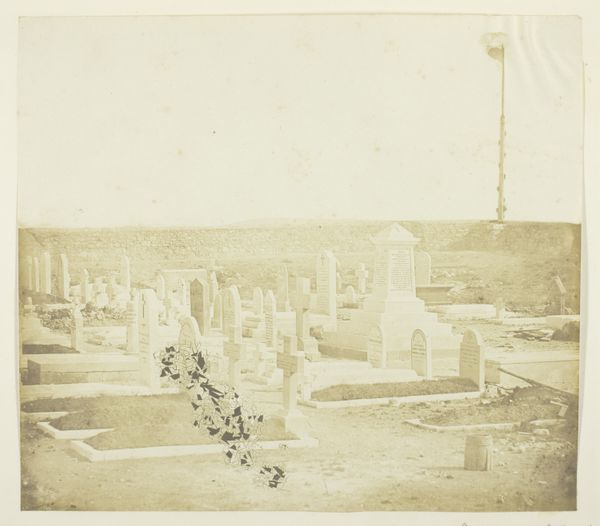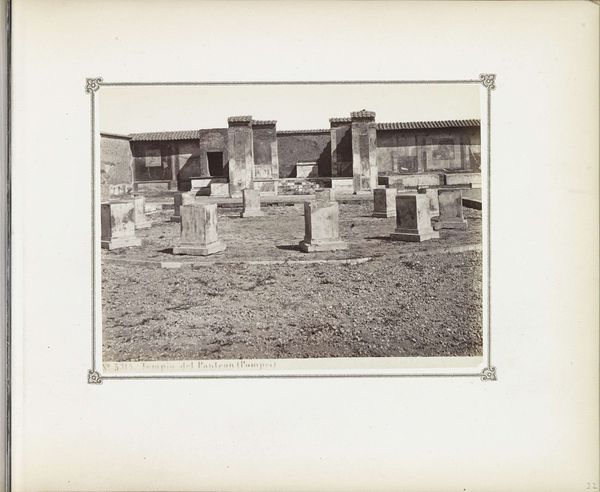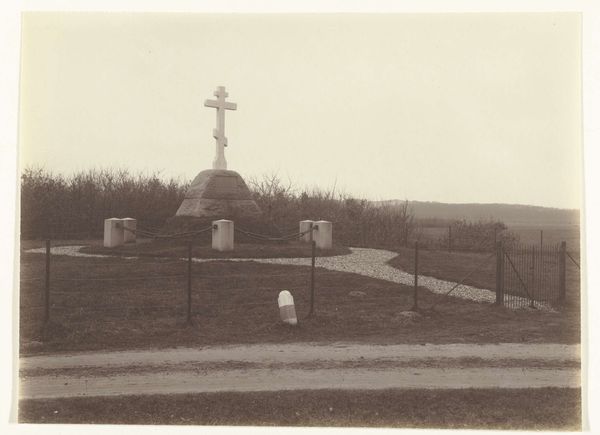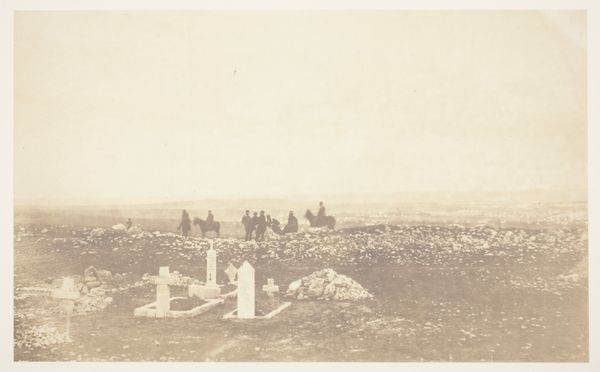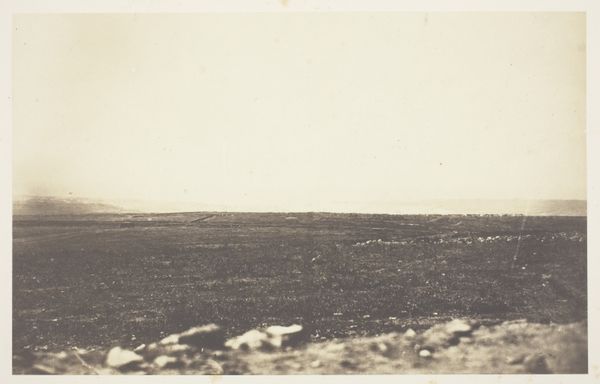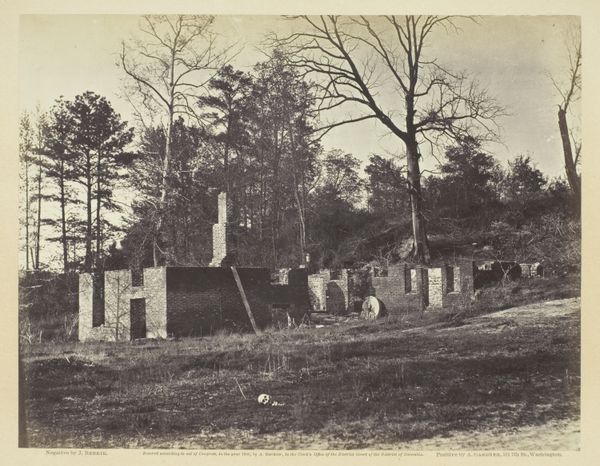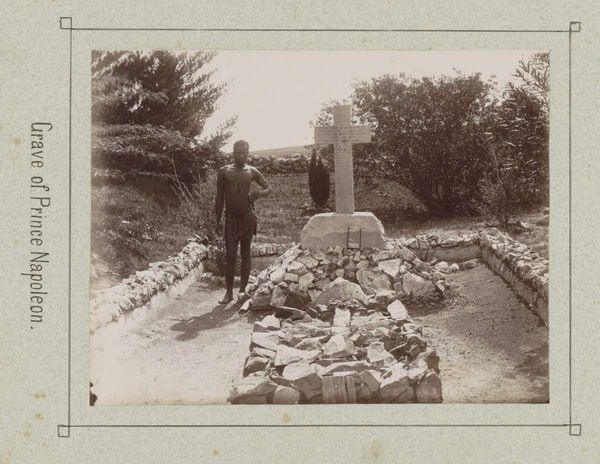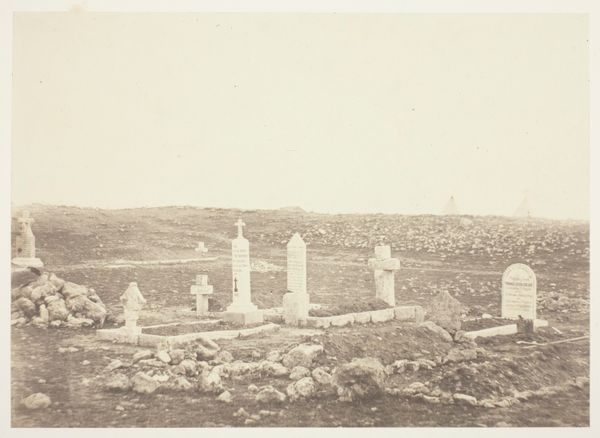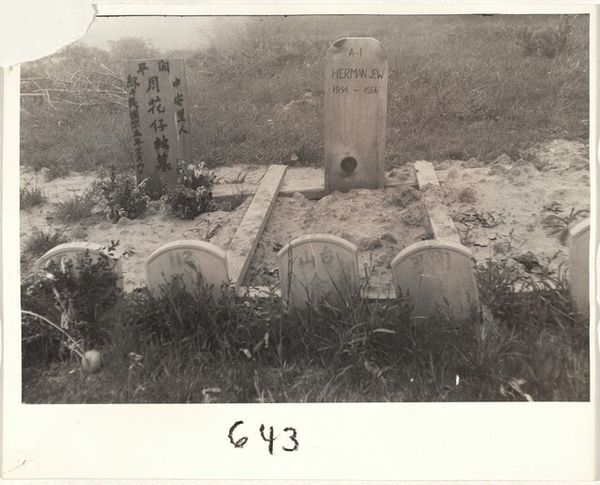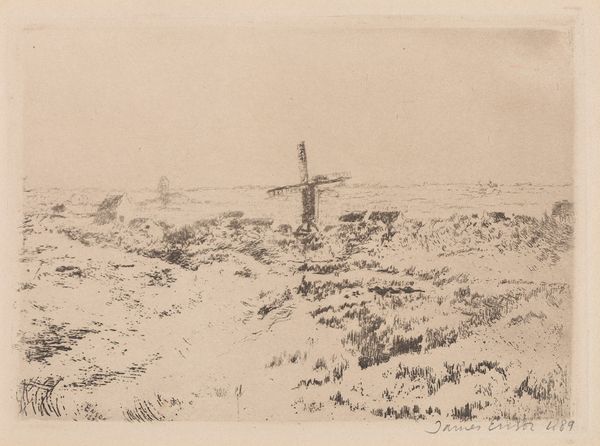
print, paper, photography, albumen-print
#
16_19th-century
# print
#
war
#
landscape
#
paper
#
photography
#
england
#
albumen-print
#
realism
Dimensions: 23.5 × 34.6 cm (image/paper); 42.5 × 58.9 cm (mount)
Copyright: Public Domain
Editor: This is Roger Fenton’s "The Tombs of the Generals on Cathcart's Hill," taken in 1855. It’s an albumen print, so the tones are muted and sepia-toned. The composition is simple, just some graves, a soldier, and a distant flag. The mood feels somber, obviously. What underlying narratives do you think Fenton is trying to convey in this seemingly straightforward war photograph? Curator: Thank you, that’s a thoughtful observation. It’s critical to consider Fenton's role as a war photographer embedded with the British army during the Crimean War. While seemingly objective, photographs like these played a significant role in shaping public opinion. Do you think Fenton's placement of the graves, combined with the distant figure of a soldier and the flag, contribute to a particular narrative about British heroism and sacrifice? Editor: I suppose so. I hadn’t considered the narrative shaping, only the photographic one, initially. It seems the careful staging – if one can say that about a battlefield – works to ennoble the dead. It makes me wonder, though, if it sanitizes the brutal realities of war. Curator: Precisely. What’s missing is equally crucial. Where are the graphic images of suffering and death that we might expect from war photography today? Think about the political implications of distributing images that highlight honor and duty, versus those that depict the true horrors of conflict. Consider too, that this was made for a British audience eager to see heroic and positive views of their war efforts. Editor: So, the photo isn’t just documenting the war; it’s also participating in the war effort. It is promoting the British agenda to both those at home and those abroad? Curator: Exactly! The photograph becomes a form of propaganda. It transforms grief into a nationalistic statement. This tension – between documentation and ideology – is precisely where the power, and the complexity, of Fenton's work resides. Editor: This has given me so much to consider about the photograph's intended effect, and about its subtle role in constructing national narratives of war. Thank you. Curator: A critical approach helps to situate the images within power structures, which is necessary in all analyses of photographs.
Comments
No comments
Be the first to comment and join the conversation on the ultimate creative platform.
